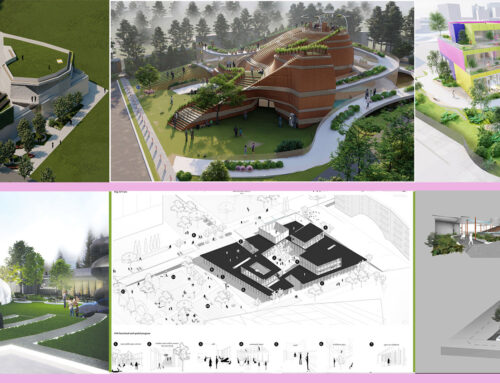“We have realized that even in this horrible time, the traditional skills of an architect are still in demand. It is a trying time for the Kharkiv School of Architecture, with our Ukrainian donors unable to support us. But the School has mustered the strength to bring together the faculty and the students in the new location. It resolutely intends to continue its development, having found international support. The Kharkiv School of Architecture has also become a platform for the new international coalition, ro3kvit.com. It aims the search for methodologies for the post-war transformations in Ukrainebecause our country will face new challenges prescribing changes in the set-up of the cities and the country on the whole. ” — Drozdov&Partners (1)
The president of Ukraine, Volodymyr Zelensky, has said that attempts to restore Ukraine will need “colossal spending.” As officials gather to create a “Marshall plan” to reconstruct the nation, local architects have already begun constructing emergency housing, healthcare facilities, and educational facilities in places further from the Russian border.(1)

As a temporary solution to the displacement of people from north-eastern and eastern Ukraine, Drozdov&Partners, Replus Bureau, and Ponomarenko Bureau have begun renovating shelters for internally displaced people (IDPs) in Lviv and its region, using school campuses and other large-scale facilities as temporary housing.
Around 132 individuals were housed in the first shelter built by the architecture company at the Children and Youth Sports School. There were, thereafter, more than 15 shelters for IDPs built across the city. One of the main aspects of the initiative was converting the existing structures to accommodate IDPs through private-public partnerships. Provisional rapid remedies that were anticipated to have problems soon had to be rejected. (2)
A new architecture was necessary to solve security and safety issues, respond to anticipated continued Russian threats, and also focus on potential European integration.
This entailed developing new energy consumption habits, adopting a new energy model, and finding new supplies. (2)
After months of unabated hostilities between Moscow and Kiev, Russia launched an invasion of Ukraine, which had the negative effect of destroying both urban and rural areas. Over 7.1 million individuals are thought to have been internally displaced within Ukraine since the start of the war. UNESCO has confirmed damage to 139 monuments as of May 30. (1)
These sites include 62 religious structures, 12 museums, 26 historic buildings, 17 buildings used for cultural events, 15 museums, and 7 libraries, with Kyiv suffering the most impact.

Following a scenario analysis, they expanded and improved the original idea by creating modular kitchens that would greatly enhance living circumstances for those residing in the shelter.
According to the assumption that all the materials used in the project must be recyclable and versatile, they labored to construct useful and robust kitchens that might be used by other institutions after the war. Due to a lack of financing, the project is now on hold. This house may not be brand-new, but it is in a location where people may feel safe and comfortable. (2)
They focused on Shigeru Ban’s modular cardboard pipe frameworks, which are easily installed, recyclable, and reusable. More than 440 people have accommodations set up across different areas. Requests for thirteen centers in different Ukrainian cities have already been received, and hence, vast voids will be transformed into oases of hope. (2)
The main goal was to create a comfortable environment for the citizens. They created alternate pieces of furniture for the centers and experimented with various designs.

Today, the majority of us need to treat one another with respect, sensitivity, and compassion. Along with building homes for internally displaced people, these architects also struggle to manage their workplaces. The conflict has had a significant impact on several enterprises nationwide. Finding projects is becoming increasingly difficult for architectural offices. Due to the significant shortage of business at home and the uncertainty surrounding when it will resume, several studios are in dire need of commissions from overseas clients. (2)
REFERENCES:
- https://www.archdaily.com/984704/drozdov-and-partners-is-transforming-schools-into-temporary-shelters-for-internally-displaced-people-in-ukraine
- https://www.dezeen.com/2022/04/29/ukraine-war-architecture-design-international-clients/



